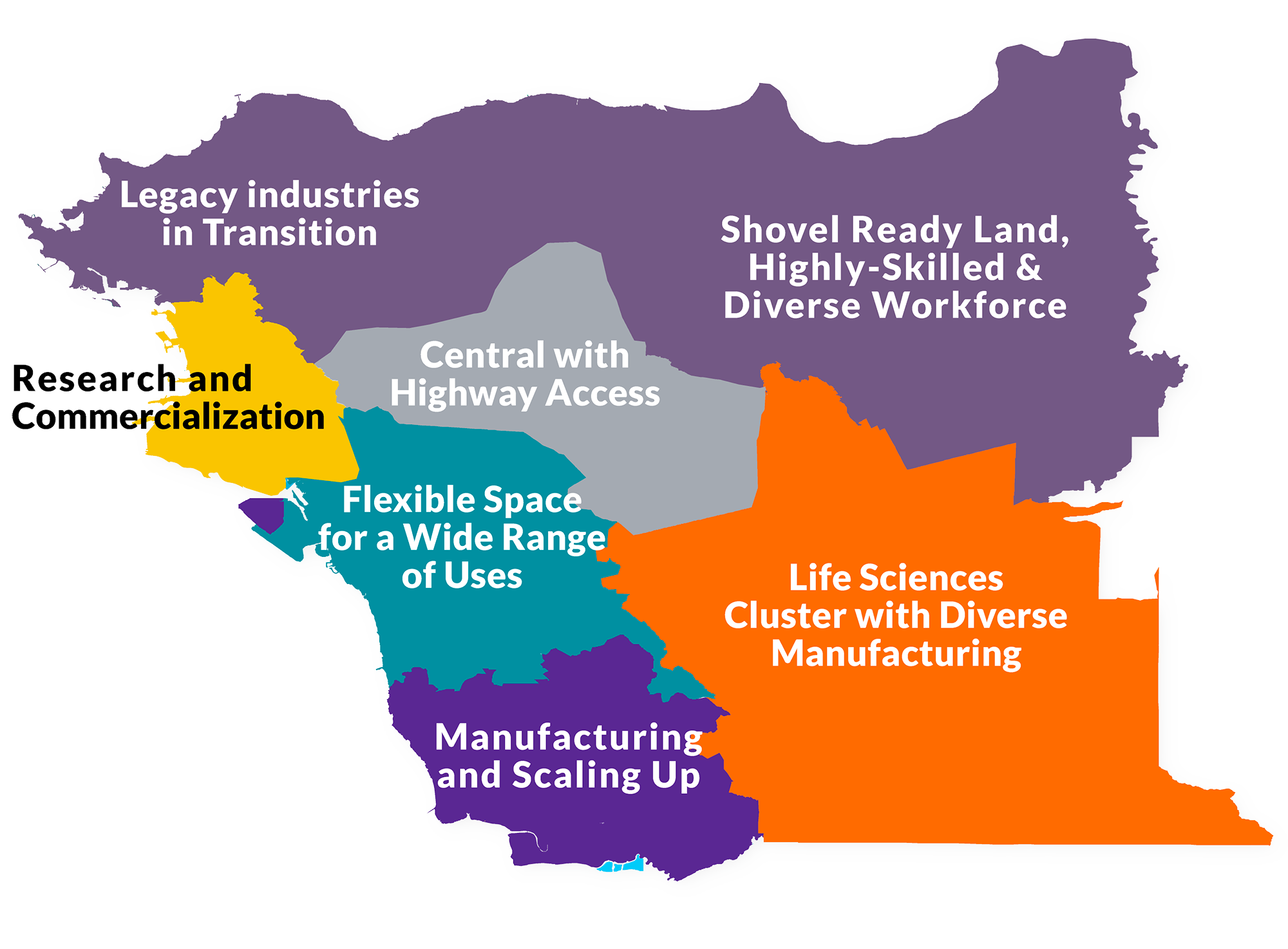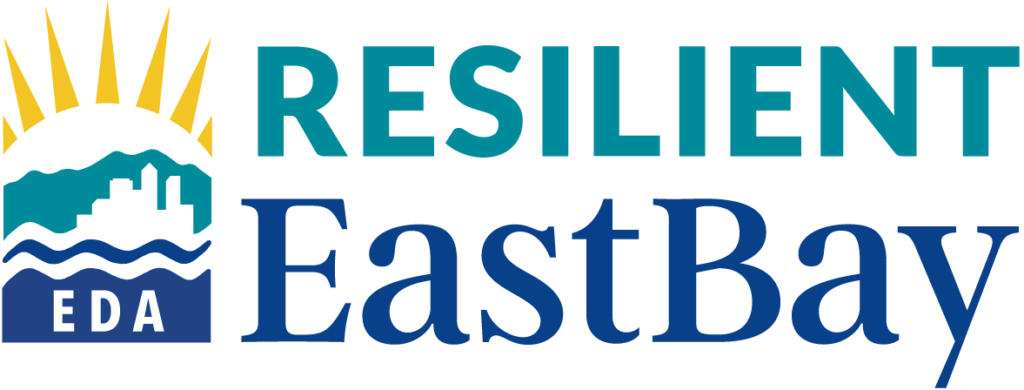Regional Ecosystem Collaboration
No East Bay community or business can be successful on its own. Businesses rely on a collection of public investments that provide the core infrastructure for them to be successful: roads, bridges, utility services, shipping channels, and even sometimes buildings or technologies.
Similarly, each East Bay community benefits from the region’s economic diversity and its overall success: each community relies on businesses in other jurisdictions to provide jobs to their citizens, and businesses in each community rely on the region to provide markets for their products; workers; and material inputs that come from or travel through neighboring areas.

A culture of collaboration around infrastructure investments and economic development can help the East Bay economy become greater than the sum of its individual parts.
Ecosystem Collaboration Objectives
- Highlight the complementary nature of individual cities in the East Bay within the context of a single regional economic ecosystem.
- Create better cooperation between East Bay cities and the private sector to facilitate intra-regional growth and development
- Facilitate goods movement activity both internal to the East Bay as part of the local supply chain, and within the mega-region.
- Facilitate ongoing innovation and technology adoption in small and mid-sized businesses
- Align utility and transportation investments to achieve a sustainable energy transition for both buildings and vehicles in industrial areas
- Improve advocacy within the region to promote business expansion and job growth in East Bay communities
The East Bay’s economic diversity and range of local land use contexts provide the region with the capacity to support all stages and facets of the industrial life cycle, from early stage startups to mature companies.Each community has its own unique workforce, transportation strengths, and land or building assets. A startup company might be most successful in one particular community, but may need to move to another area within the East Bay as it grows or diversifies its operations. A startup in a different industry may be more successful elsewhere in the East Bay, due to the workforce, transportation assets, or utility characteristics in that particular location. The region will be most successful if it continues to foster economic diversity and effectively utilize the unique strengths of each of its constituent communities.
Cities should also understand that “leading edge” businesses in industries such as advanced manufacturing or the life sciences, also rely on other types of less innovation-oriented businesses, like linen suppliers or small scale warehousing and distribution. These supporting industries are also crucial to the regional economy’s ability to grow and evolve, so cities will need to continue to provide places for these perhaps older and less profitable businesses to operate.
Establishing a culture of collaboration between local governments, private firms, and local institutions can help the region plan and advocate more effectively to address industrial issues. This can work in multiple ways. Collaborative networks can help foster connections between brokers and economic development staff to help businesses find the best East Bay location as their companies evolve. Collaboration between planning, economic development, and permitting staff within the same city can also be beneficial for streamlining approvals and identifying business challenges. Connections between local governments and regional organizations can help them identify state advocacy opportunities and identify industrial planning priorities. Lastly, improved regional collaboration around utilities, or infrastructure investments can help ensure that businesses can obtain the necessary power or water related service to support their operation, improve intra- and inter-regional goods movement, streamline development timelines, and identify critical investments to help the region best use its industrial lands.
Regional Ecosystem Strategies
View Detailed Regional Ecosystem Strategies >
The Resilient East Bay process has identified three broad categories of strategies that the region should pursue collectively. The strategies are presented as recommendations. Recommendations for regional ecosystem collaboration focus on the following topics:
1. Effective Business Ecosystems
-
- This section describes strategies to help support small businesses and foster innovation in the East Bay. Strategies include regional marketing, industrial roundtables, and startup resources.
- This section also provides recommendations for how individual cities can identify their competitive advantages within the context of the regional ecosystem. Because businesses at different points in the business cycle may require different competitive advantages, cities can work together to retain businesses within the East Bay as they grow and expand.
2. Transportation & Goods Movement
-
- This section provides recommendations to improve goods movement for local businesses, distribute infrastructure investments across the region to support economic development, protect important locations for transportation, make transportation more efficient, and maintain strong inter-regional goods movement opportunities.
3. Utilities & Industrial Resilience
-
- This section focuses on how policy and collaboration can be used to eliminate pinch points in utility provision and plan for industrial efficiency and sustainability. Strategy recommendations include state-level advocacy, utility district planning, environmental justice, and developer education about utility processes.


